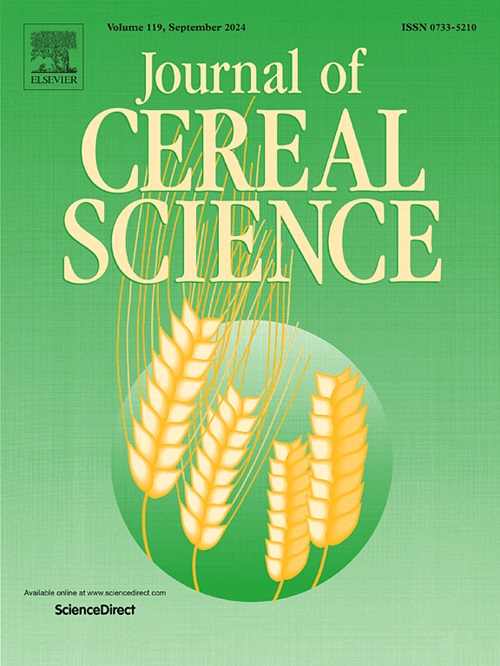Effects of germination duration on enzymatic activities, starch structure, and brewing quality of black barley malt
IF 3.7
2区 农林科学
Q2 FOOD SCIENCE & TECHNOLOGY
引用次数: 0
Abstract
Owing to its antioxidant capacity and pigmentation, Black barley (Hordeum vulgare L.) is a promising cereal for specialty malts and dark beer production. However, its low enzymatic activity during malting can reduce processing efficiency. In this study, we aimed to evaluate the malting performance of a domestic black barley cultivar using five germination treatments (M95–M115), corresponding to germination durations of 95–115 h. As coleoptile elongation increased with germination time, α- and β-amylase activities rose significantly, while malt yield, crude protein, and crude fat content declined. Scanning electron microscopy and amylopectin chain length distribution analyses revealed progressive starch degradation and a shift toward shorter chains. Treatment M105 achieved the best balance of fermentable sugars (maltose and oligosaccharides), high free amino nitrogen, and low bitterness. M115 yielded more ethanol due to higher enzymatic activity; however, its sugar profile was less favorable for brewing. Overall, coleoptile elongation correlated more strongly with malt and beer quality traits than germination time alone. These findings suggest that coleoptile elongation is a more reliable indicator for optimizing malting conditions in pigmented barley and support cultivar-specific approaches for specialty brewing.
发芽时间对黑大麦麦芽酶活性、淀粉结构和酿造品质的影响
黑大麦(Hordeum vulgare L.)由于其抗氧化能力和色素沉着性,是一种很有前途的特种麦芽和黑啤酒生产谷物。但其在酿造过程中酶活性较低,降低了加工效率。以国产黑大麦品种m95 ~ m115为试验材料,采用萌发时间为95 ~ 115 h的5种处理,对其发芽性能进行了评价。随着萌发时间延长,胚芽延伸率增加,α-淀粉酶和β-淀粉酶活性显著升高,而麦芽产量、粗蛋白质和粗脂肪含量下降。扫描电子显微镜和支链淀粉链长分布分析显示淀粉降解和向短链转变。处理M105达到了发酵糖(麦芽糖和低聚糖)、高游离氨基氮和低苦味的最佳平衡。M115酶活性高,乙醇产量高;然而,它的含糖量不太适合酿造。总体而言,胚芽伸长与麦芽和啤酒品质性状的相关性强于萌发时间。这些发现表明,胚芽伸长是优化色素大麦酿造条件的更可靠的指标,并支持特定品种的特殊酿造方法。
本文章由计算机程序翻译,如有差异,请以英文原文为准。
求助全文
约1分钟内获得全文
求助全文
来源期刊

Journal of Cereal Science
工程技术-食品科技
CiteScore
7.80
自引率
2.60%
发文量
163
审稿时长
38 days
期刊介绍:
The Journal of Cereal Science was established in 1983 to provide an International forum for the publication of original research papers of high standing covering all aspects of cereal science related to the functional and nutritional quality of cereal grains (true cereals - members of the Poaceae family and starchy pseudocereals - members of the Amaranthaceae, Chenopodiaceae and Polygonaceae families) and their products, in relation to the cereals used. The journal also publishes concise and critical review articles appraising the status and future directions of specific areas of cereal science and short communications that present news of important advances in research. The journal aims at topicality and at providing comprehensive coverage of progress in the field.
 求助内容:
求助内容: 应助结果提醒方式:
应助结果提醒方式:


